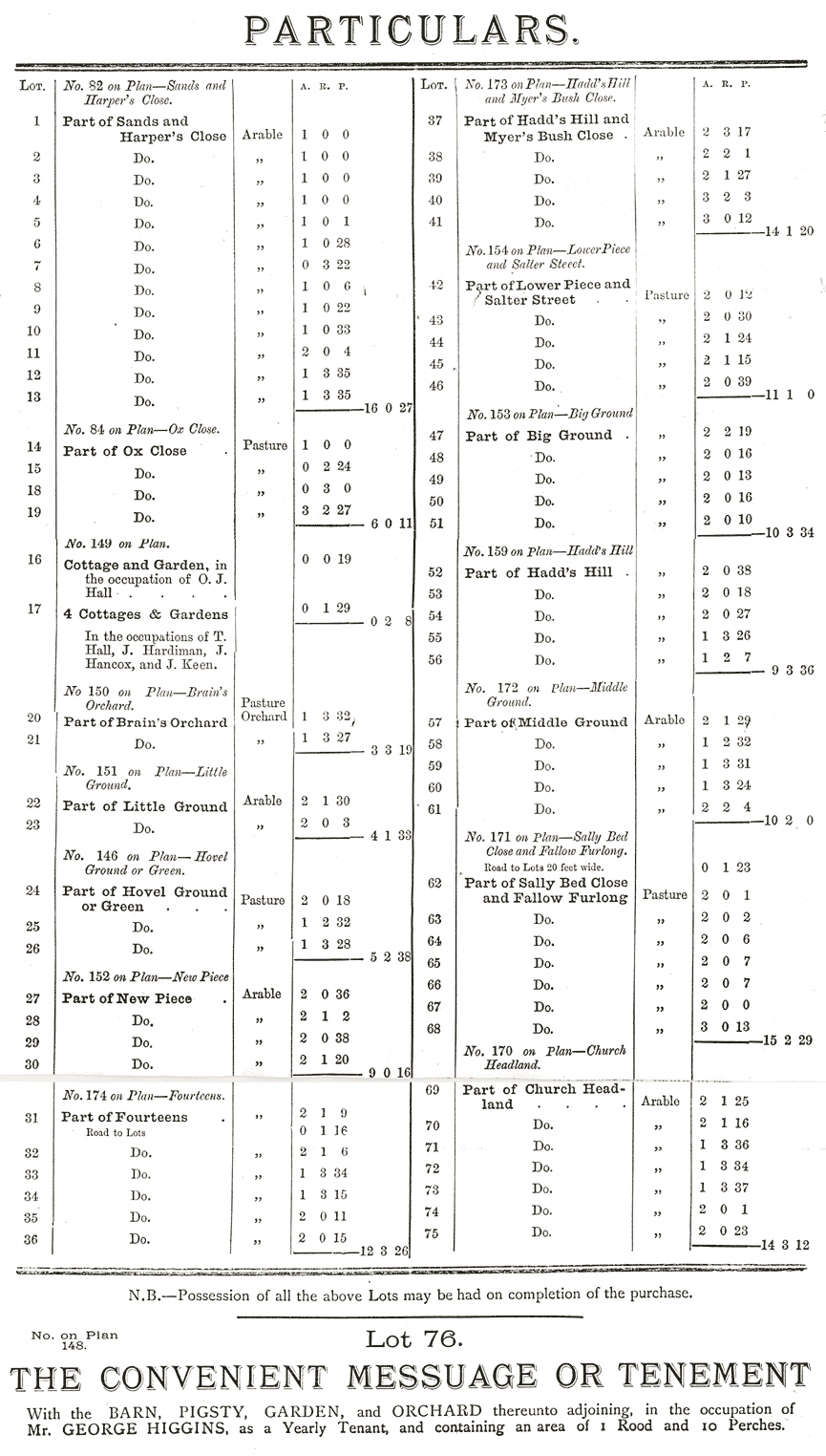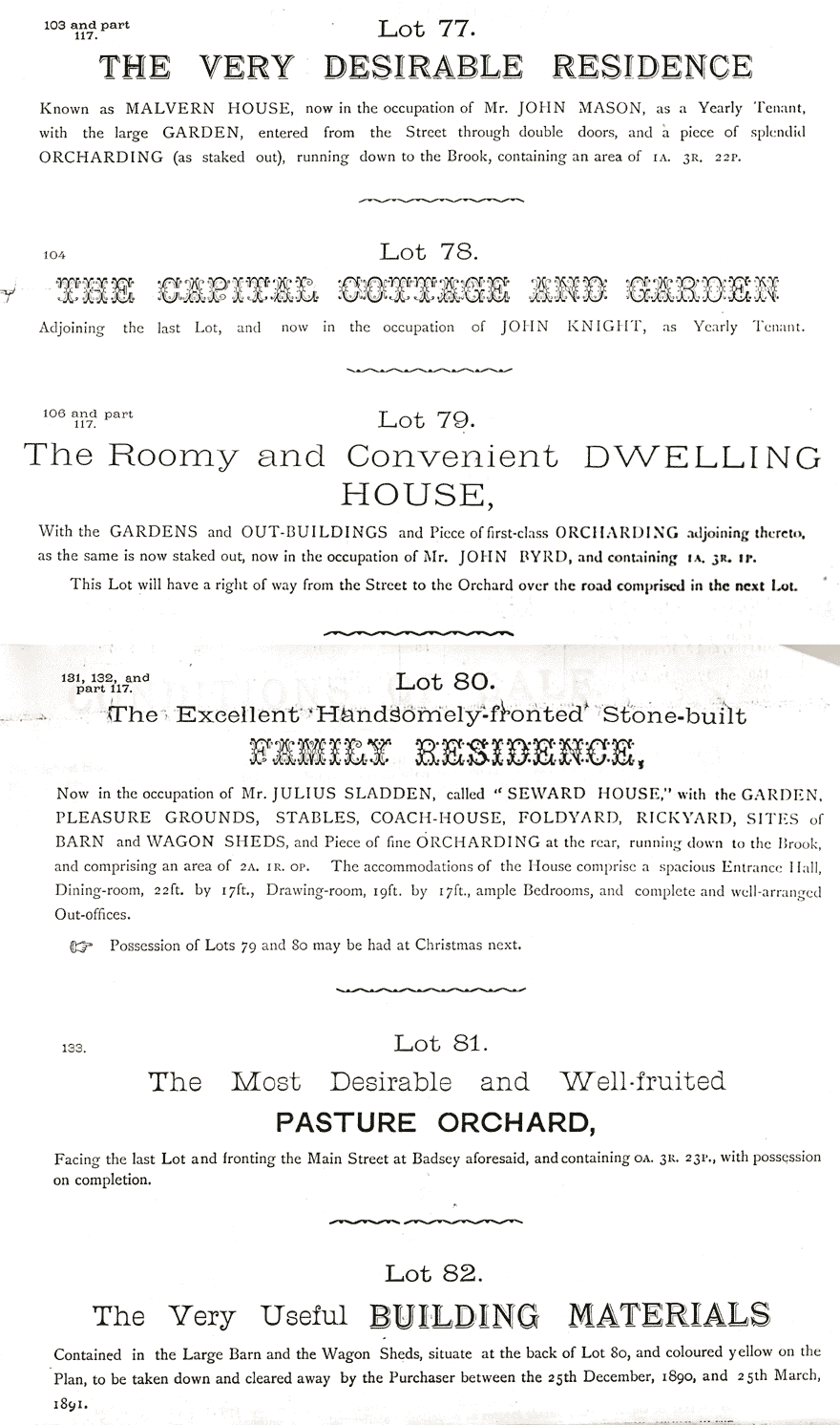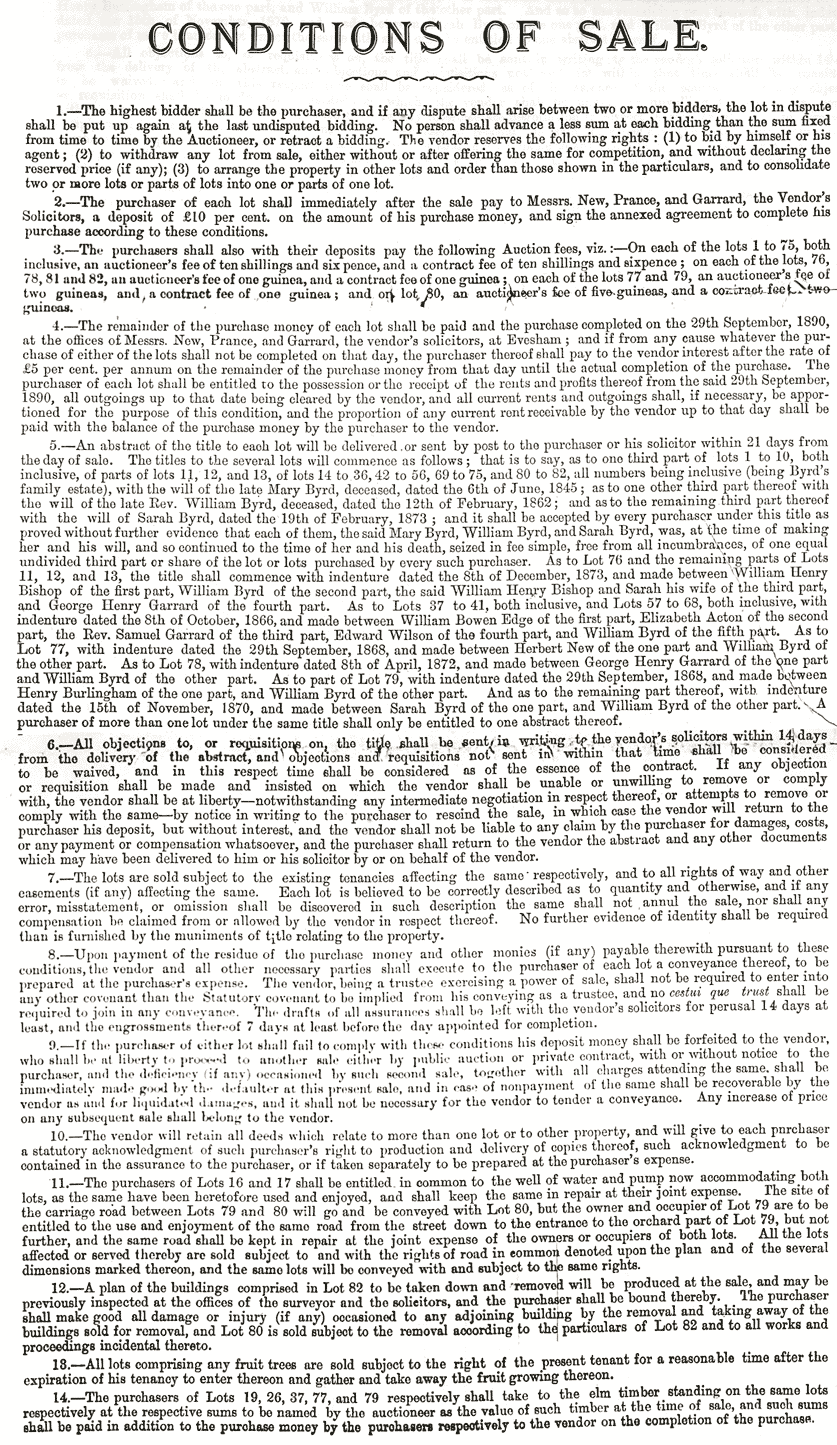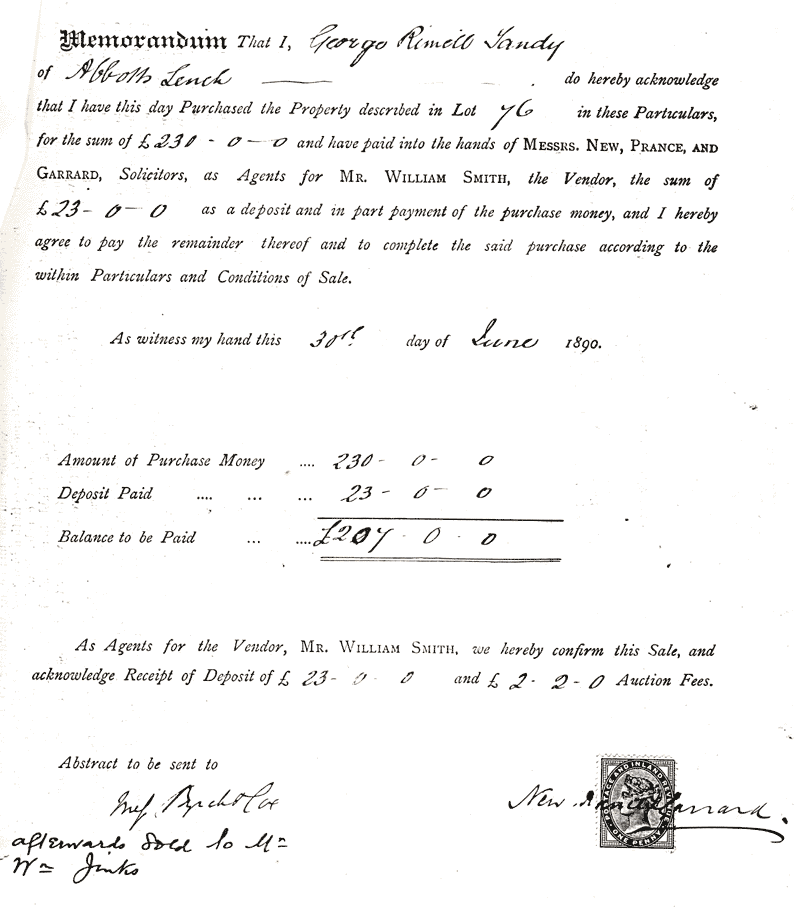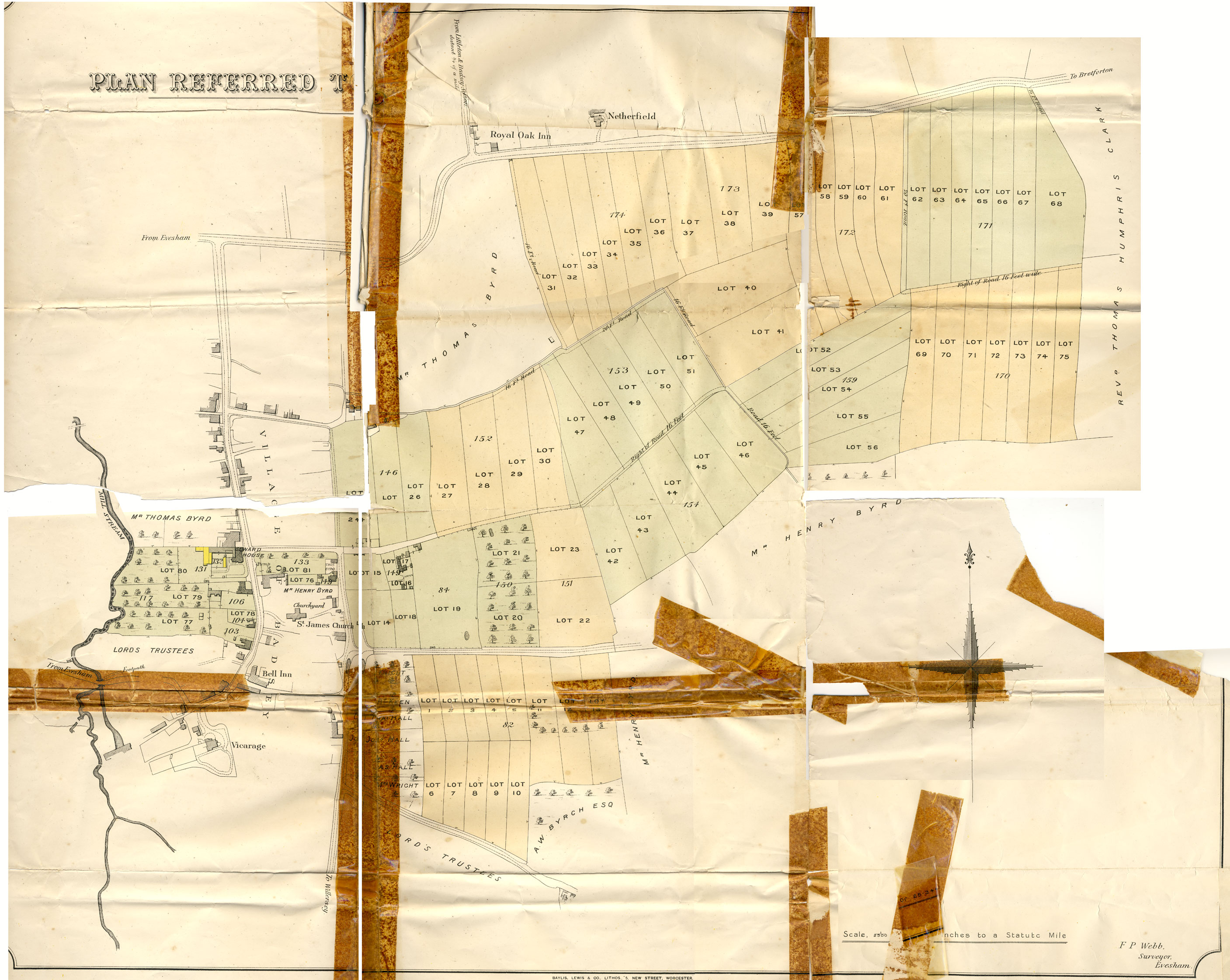This is a particularly important auction in Badsey's history. A large area of the village was offered for sale. Many of the houses put up during the market gardening boom were built on these plots.
Why the land came up for sale in 1890
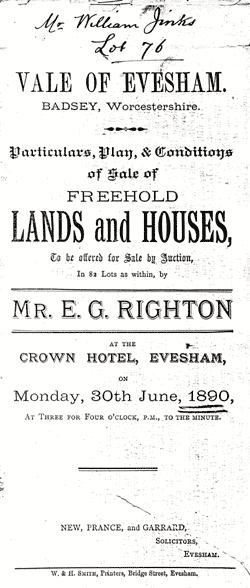
The sale of land in 1890 came about because of the dire financial problems of William Byrd (1841-1902). William was the second of three sons of Thomas Byrd (1795-1865) and the grandson of Thomas Byrd (1753-1835) who owned much of Badsey and Aldington at the time of Enclosure. William inherited land from the Byrd family estate and, as a young man in his twenties, began acquiring more land and property in Badsey (between the years 1866 to 1873). He married in 1867 and began producing a large family. William moved into Seward House soon after his marriage (which was owned by his Aunt Sarah, and was to pass to him on her death in 1879), and spent a large sum of money refurbishing the house, taking out a loan of £1000 in expectancy of his inheritance. He turned the house into a gentleman’s residence and had his initials, WB, carved in stone on the drawing-room fireplace.
But William severely over-stretched himself financially. By the time that Sarah Byrd died in March 1879, both the Byrd family estate and the land that William himself had bought was heavily mortgaged. The Byrds had left Badsey in the mid 1870s. In 1881, in reduced circumstances, they were living at Leek Wootten, Warwickshire, where William was Farm Bailiff. By 1883, they were living in Stratford on Avon where William had taken a job as a surveyor’s foreman and the family was living in a terraced house; William continued to live there until his death in 1902.
In August 1879, William filed a petition for bankruptcy at the County Court of Oxfordshire in Banbury. In September, his creditors, at a meeting at The White Hart Hotel, Moreton in Marsh, decided to liquidate rather than declare him bankrupt. Herbert New was executor and surety for William Byrd and William Smith was Trustee. In April 1880, there was a second meeting of creditors. William Smith called in his personal estate to pay for the proceedings, but £400 was owing which Smith paid. The Byrd estate was entailed, which meant that it had to remain in the Byrd family and not be sold but, because of the financial problems, a disentailing assurance was enrolled in the High Court of Justice on 4th June 1889, which enabled the land to be sold rather than be passed on to William’s eldest son, William Charles Byrd. Herbert New was still owed money and William Smith, the Trustee, put all the land up for auction on 30th June 1890.
- Lot 16 – this house is Bramley Cottage, 22 Brewers Lane, Badsey.
- Lot 17 – these are 18 & 20 Brewers Lane, Badsey (the other two cottages were demolished in the 1930s).
- Lot 76 – this house is 4 Chapel Street, Badsey.
- Lot 77 – this house is Malvern House, 36 High Street, Badsey.
- Lot 78 – this house is The Little Cottage, 34 High Street, Badsey.
- Lot 79 – this house is The Laurels, 26 High Street, Badsey.
- Lot 80 – this relates to Seward House (current-day Nos 24A & 24B High Street) and the cottages (Nos 24C & 24D High Street) which were built where the farm buildings were once located.
Maureen Spinks, April 2010


